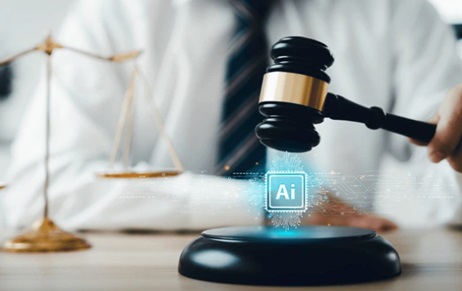Intellectual Property Rights (IPR) are like different keys for different locks. Just like every lock…
Rise Of IP Issues Due To The Increasing Popularity Of NFTs
Introduction
It is no news that cryptocurrency and blockchain technology have taken over the sphere of digital currency. But in this sphere of metaverse and blockchain currencies, the Ethereum blockchain has gained skyrocketing popularity with the evolution of Non-Fungible Tokens. NFTs have indeed transformed the world of digital assets and ownership, with sales as high as $2.47bn only 6 months into 2021.
The development of these tokens has marked a new age of transparency and digital security as it is now possible to create and store a plethora of creations consisting of art, music, contracts, records, pictures, and even tweets as digital assets. The ease of conversion and exchange has substantially contributed to the widespread popularity of NFTs within a very short period of time.
However, the numerous downsides to these transactions are often overlooked by both buyers and sellers due to their characteristic appeal. Apart from financial regulations, these tokens also pierce into restrictions imposed for the protection of intellectual property. This is because the storage of a digital version of creations does not designate the title of the creator per se, let alone its trading.
The recent Nike lawsuit against StockX is only one of the many infringement disputes flamed by the exchange of NFTs. The fluctuating and limitless prices of NFTs are indeed covering up for the existing legal issues. For instance, the $66K NFT sold by the popular American digital artist Beeple carried a resale value of $6.6mn dollars. Moreover, a mere collage of an artwork “Everydays – The First 5000 Days” made by him was sold for $69.3mnin an auction.
Tokenisation and Ownership of Digital Assets under NFTs
In order to truly understand the transgression caused by the trading of NFTs, it is pertinent to trace the functioning of NFTs. Non-Fungible Tokens mainly refer to digital files of various digital as well as physical goods and creations that are stored as tokens and can be traded easily. The main appeal of NFTs is its uniqueness; every digital file has its own unique value and standing. This decentralisation of finance has paved way for the tokenisation of practically everything, i.e. there is no limitations on the type of good or creation that can be stored as an NFT.
Once stored on the blockchain, these tokens serve as digital assets that can be owned by buyers. However, the said claim on these assets does not includethe bundle of rights granted to the original creator. Further, the world of digital art itself is so immensely entangled that recreations of designs and products that are protected under IP rights often go unnoticed. Moreover, the abundance of tokenisation has even led to the minting of patents as NFTs even though there is no clear provision about the change in ownership, royalties, and related licenses. This concurrence of NFTs and IP has resulted in numerous issues, some of them are discussed hereunder.
IP Implications under NFTs
Since NFTs have become the next big rage in the world of blockchain technology, not a lot of attention is paid to the source or authenticity of the digital asset thus traded. The ease of storing digital files as tokens with the availability of minting tools has paved way for infringement of copyrights, trademarks, design patents, and violation of rights to distribute and reproduce. This makes it pertinent for the consumers as well as legal professionals to outweigh the opportunities offered by NFTs as opposed to the inherent risks involved in the protection of intellectual property.
First and foremost, the notion of synonymously perceiving ownership of a digital asset as the ownership of its copyright itself has led to several misconceptions. When a creation is stored on the Ethereum blockchain, the same is available for trading as a digital asset. However, buying or selling the said creation does not entitle the trader to make use of the rights granted to the original creator. Further, the pressing issues of imitation, trademark infringement, and dilution continue to exist as recreation of patented designs, registered logos, product designs, art pieces, protected text, and even actual products takes place.
This issue was highlighted in the controversial case of Hermes where the respondent Mason Rothschild sold NFTs under the brand ‘MetaBirkins’ which was similar to the bags created by the luxury fashion brand Hermes. Rothschild is still tied in this longstanding dispute with charges of trademark dilution, infringement, false designation of origin, cybersquatting, and injury to business reputation. Another striking lawsuit surfaced with Tarantino’s Pulp Fiction dispute where the director was sued by the film’s production company after he tried to sell excerpts of the film’s screenplay as NFTs.
These lawsuits highlight the grave transgressions of the bundle of rights granted under IP protection. However, the issues of trademark infringement and fair use are fended off under the garb of interpretation and protection of art. Lastly, the trading of NFTs is also protected under the garb of doctrine of first sale. However, neither is the doctrine sufficiently established, nor is its applicability to the range of digital files stored on the blockchain well defined.
Conclusion
NFTs are surely the future of blockchain asset movement but stepping into this realm without critically analysing the IP implications can attract a sticky wave of litigation. The lack of sufficient regulations and scope of permissible trading of NFTs in light of copyright and trademark protection has added to the preexisting complications and thus creating awareness about its downsides and associated risks is crucial. Within its short lifespan, the rise of NFTs has already resulted in numerous legal disputes involving an abuse of the rights granted under IP regulations. If this ill-defined environment of legal sanctions continues to prevail, not only would it lead to worsened litigation but also transgress the very essence of IP protection as creators would have no refuge for their creations.
Author: Prisha Shah – a student of Symbiosis Law School (Hyderabad), in case of any queries please contact/write back to us via email vidushi@khuranaandkhurana.com or at at IIPRD.,



